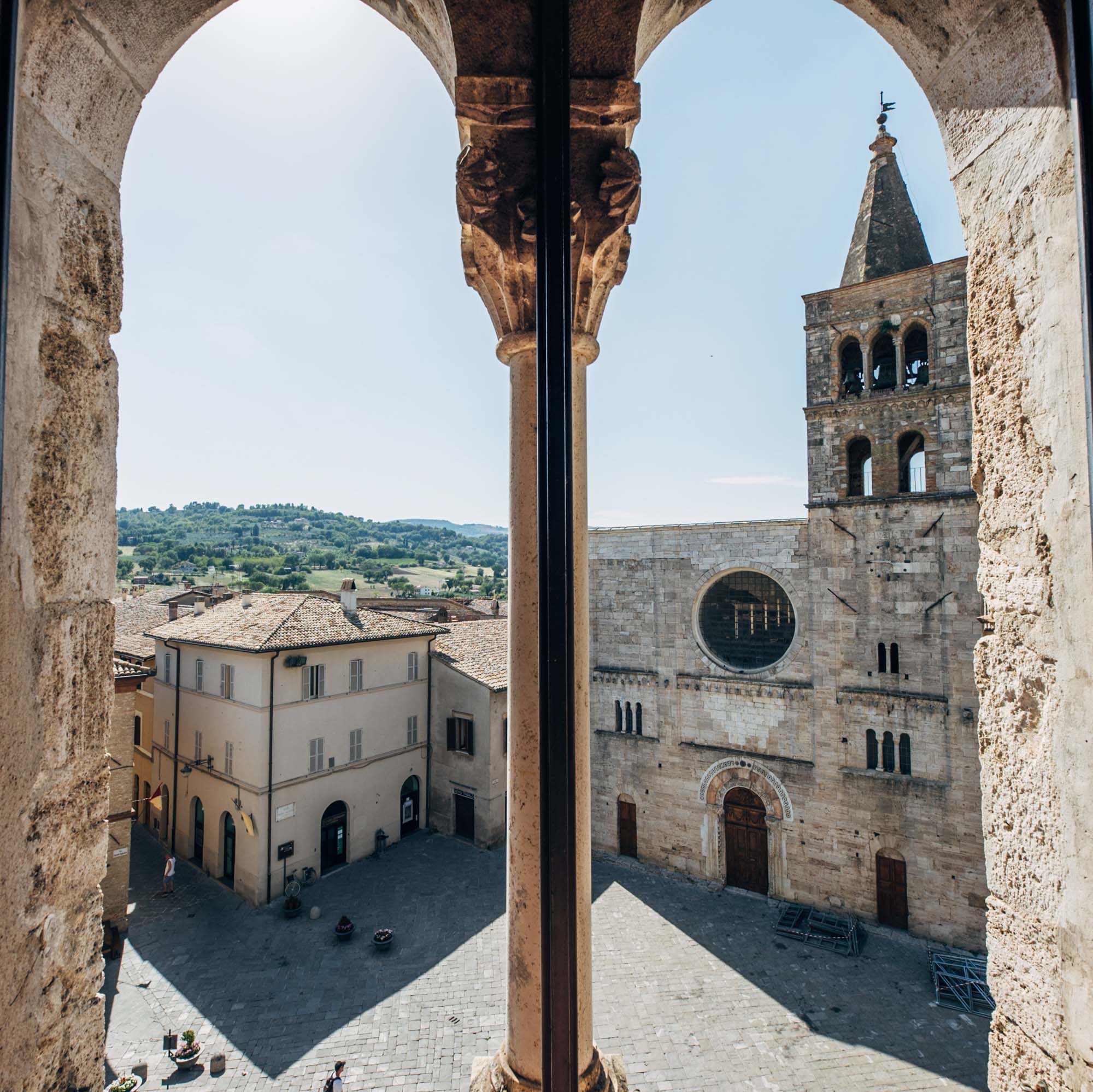
A MEDIEVAL JEWEL
From Montefalco, Bevagna can be reached via the charming road that winds through the vine-covered hills from Montepennino. It still very faithfully preserves the urban layout of the Roman period, and is a jewel among the small Umbrian villages, all waiting to be discovered, strolling leisurely and enjoying corners and views that seem to be projected into a miraculously alive Middle Ages.
The archaeological evidence that has emerged from the territory of ancient Mevania dates back to the late Iron Age. According to some, an Etruscan settlement - hence the name Mefana, belonging to an Etruscan gentry - preceded the arrival of the Umbrians. The first historical information is provided by Titus Livius in his description of the Roman conquest of Umbria. Situated in a fertile territory at the confluence of the rivers Clitunno and Timia, Bevagna was the site of an important river port. From 220 BC, the route of the consular Via Flaminia had one of its most important branches at Bevagna, and the city became a rich and flourishing commercial centre. A Roman municipality in 90-89 BC, it was ascribed to the Aemilian tribe.
Decayed in the late Empire, Bevagna became part of the diocese of Spoleto and then of the Lombard Duchy of Spoleto in 597, until Charles Martel donated the entire territory occupied by the Lombards to the Church in 774. Devastated by the barbarian invasions, Bevagna rose again in the age of the communes, but given its strategic position, it was long and fiercely contested by popes and emperors and suffered repeated destruction, until it received the title of city from Leo XII in 1825.
Corso Matteotti, on the route of the ancient Roman decumanus, is still today the main access road to the city, leading to the surprising Piazza Filippo Silvestri, with its two Romanesque churches dedicated to St Michael and St Sylvester and the Teatro Torti, inside the Palazzo dei Consoli. The next morning, admire the mosaic of the Roman Baths, which, with the ambulatory of the Roman Theatre and the Port Building (which once served as a commercial warehouse), is all that remains of Roman Mevania.
In the afternoon, following the signs for Cannara, stop about 2 km from the centre of this locality, near the small Lake Aiso (see below, p. 70). From here you can see Mount Subasio in all its rounded bulk, guarding the valley that gave birth to the Latin poet Propertius (1st century BC).
A few metres away from Lake Aiso is another resurgence of natural and archaeological value, on the bottom of which a sanctuary with Roman mosaics was found. The discovery testifies to the veneration, in this area, of deities linked to the request for sanatio (healing) by devotees.